Airag might be the first word you hear in Mongolia (and with good reason too), but it is more than just Horse Juice. Airag is a tradition.
Never mind that people say Mongolia is no place for vegetarians, and never mind that you can list out all the Mongolian dishes and each of its variations and still not cross fifty in total – food here is wonderful, despite the repetitions you might find everyday.
That is not say I did not get a little tired of dry noodles with dry meat and potatoes over the three weeks I spent in the country, but on the whole, I loved it all.
History of Mongolian food
Food in Mongolia is influenced by Russia, China and other Central Asian countries. considering that traditionally Mongols were nomads, the food is in keeping with the tradition. The diet is meat-rich (especially sheep/ goat) but the occasional exceptions can be seen in the form of dumplings. Cow, horse and camel milk are consumed. Vegetables are in short supply here, thanks to its harsh climatic conditions – but naturally that does not bother the Mongols – because ” Meat is for men and grass for animals.”
Which is just as well that people here do not worry about cholesterol and such like – the fat in the meat helps withstand the extreme cold temperatures.
In his book Riding the Iron Rooster, Paul Theroux wrote: “Mutton was in the air. If there had been a menu, mutton would have been on it. It was served at every meal: mutton and potatoes—grisly mutton and cold potatoes. The Mongolians had a way of making food inedible and disgusting, and they could transform the most inoffensive meal into garbage, by serving it cold, sprinkling it with black carrots, or garnishing it with a goat ear.”
That kind of sums up the food scene for you. But that being said, let’s see what else you can enjoy here!
Food and drinks of Mongolia
Mongolian food and drinks are influenced by the extreme climate. Winter temperatures drop to -40°C and then rise to +50°C during the summer.
Due to the extreme climates, it is difficult or impossible to grow anything. Chicken cannot survive the extreme temperatures, so they are imported. Fruit and vegetables are also imported and are generally very expensive. One of the nomadic families we stayed with told us that fruit and vegetables are considered “unmanly” and traditionally used in Mongolia as food for the animals. Not the best destination for vegetarians or vegans!
Mongolia is also landlocked, so no sign of fish anywhere else. And water is sparse. Therefore, milk is often used as a base to create drinks. Here are our top drinks to try in Mongolia!
Must try foods
Aarul: In the bowl are home made, albeit rock hard doughnuts and aruul. Aruul comes in many shapes and sizes, is made from dried curd (yogurt) and stays good for years. Aaruul is an acquired taste for foreigners – I have heard people use strong words to describe its rather strong, salty taste, but personally I loved it. It makes for a great snack, is healthy and stays long without turning rancid.
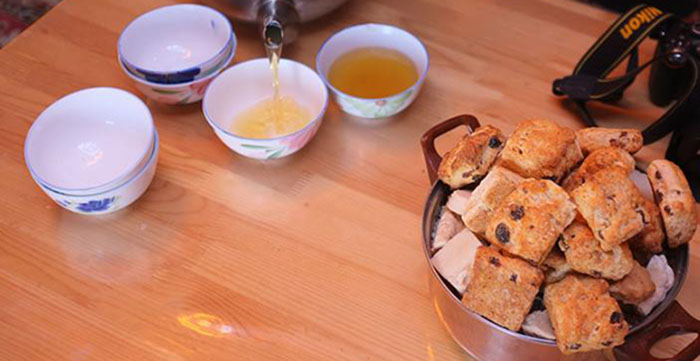
Khuushuur: A fried dumpling is called Khuushuur and usually comes filled with meat.



A soup-meal like this is considered a meal in itself. It is full of local flavours, is wholesome and keeps you full for a long time. Mongolian cuisine has a lot of meat and fatty products, keeping in mind the harsh climate and the fat in their food helps withstand the cold.

Noodles: There is only so many times you can eat this meal out in the Gobi Desert, but understand that vegetation is scare in the Gobi and all of Mongolia in general, and the vegetables you can get in your meal are limited to carrots and potatoes. The noodle-meal is definitely whole, tasty -though a little bland, but goes well with the weather. Eaten around the central stove in a ger, it makes for great stories later on.
Dumplings: Buuz is a type of Mongolian steamed dumpling filled with meat (it is believed that Buuz is influenced by the Tibetan dumplings).

Steamed meat dumplings (buuz). They are named depending on their shape.
Drinks not to be missed

Uzemnii: A raisin drink is quite a treat – the drink is made from boiling raisins in water for a long time. At the end of the refreshing drink, you get to eat the residue!
Süütei Tsai (salted milk tea): Water in Mongolia is considered sacred and is quite scarce in arid desert areas. Tradition has it that pure water shouldn’t be drank straight – hence milk is widely used as a beverage. Like the “Süütei Tsai” meaning, salted milk tea. You will be greeted with this (yup, no sugar) in every home or ger all over Mongolia.
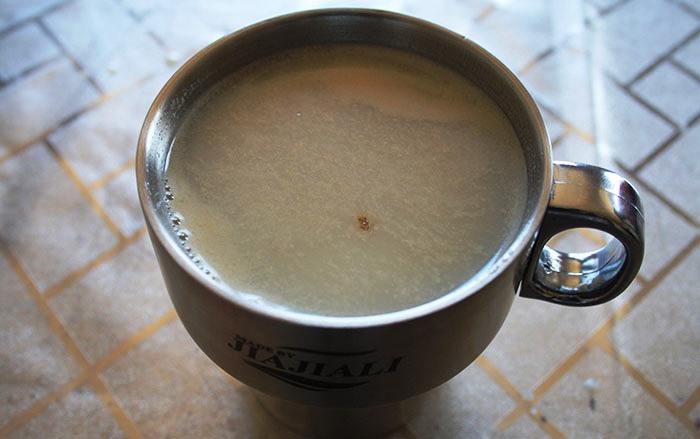
Airag: In Mongolia, the milking season for horses traditionally runs between mid-June and early October. Following this, milk is fermented (and it becomes slightly alcoholic) – the result is airag, the de facto national drink of Mongolia. The drink itself is quite sharp and strong and it will take more than just willpower to down a few – but, mark my words, no one can escape the “kick” it gives. It is worth a try for sure, tastes like a bad yogurt drink though.
No wonder it also called the Horse Juice. It dates back to the Mongol times when traditionally guests in a nomadic ger would be offered a bowl of airag along with a plate of dairy treats, like aarul.
Vodka: Mongolia, like any former Soviet Bloc country, loves vodka. Be it horse-milk vodka or the famous Chinggis Vodka so commonly sold everywhere.


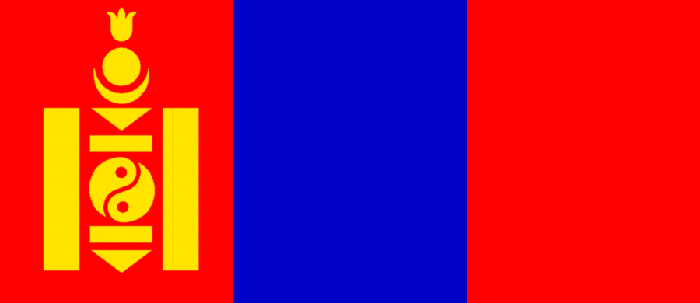
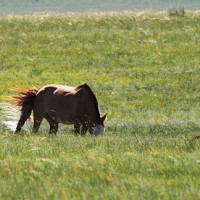
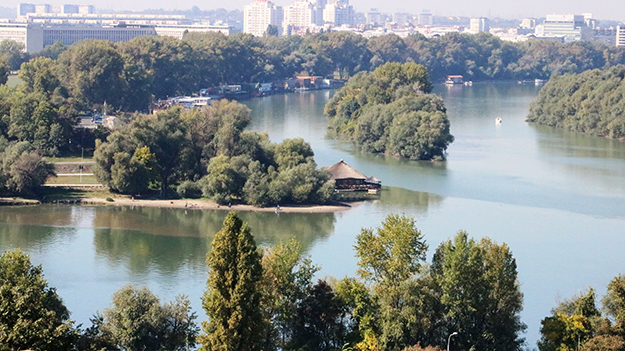
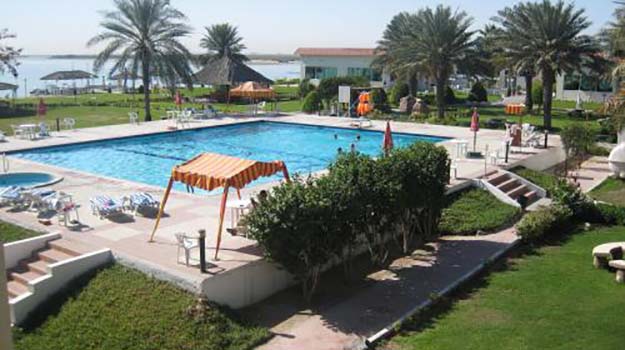
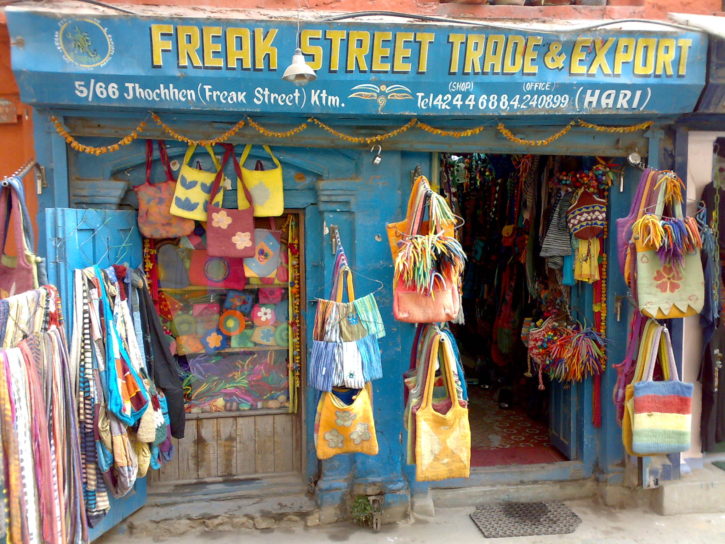
Oh my god airag – urghhhh!! I’m generally very easy with all food and drink but this stuff I just couldn’t stomach. Yet our guides would all down the stuff like water…
Here’s our take on Mongolia’s food and drink
Oh and good old khorkhog (goat/veg BBQ cooked with hot stones) – did you try it? I managed to get this recipe for it from the last nomadic family we stayed with. Khorkhog was our highlight – delicious!
you are right- airag is absolutely, er, disgusting. but that did not stop our unruly bunch from guzzling that one hell of a brew. Horse juice describes it correctly. I love Mongolia – hurrah